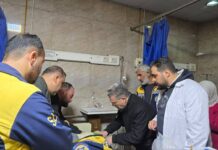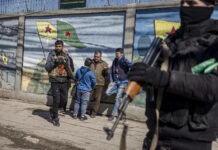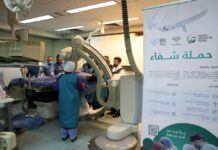
Forty-two Syrian families, totaling 178 individuals, were released Sunday from the al-Hawl camp in eastern Hasakah and transported back to their homes in Aleppo province. The operation, supported by the US State Department and carried out under the supervision of the United Nations High Commissioner for Refugees (UNHCR), is the first phase of a new repatriation initiative known as the “Hope Convoy.”
The release comes after months of joint coordination between the Autonomous Administration of North and East Syria (AANES), the Syrian government, and several international and local organizations. According to a statement from the Hawl camp administration, the families who departed included chronic illness patients and humanitarian cases, whose return had been prioritized.
Tripartite Deal Facilitates Movement
The repatriation follows an agreement finalized during a May tripartite meeting at the camp involving representatives from the Syrian transitional government, the international coalition, and AANES. The agreement established a formal mechanism to evacuate displaced Syrians in a structured and secure manner, aiming to ease their reintegration into their areas of origin.
“This initiative reflects our ongoing commitment to ensuring that displaced Syrians can return home with dignity and in safety,” said Jihan Hanan, co-chair of the Hawl camp.
The returnees were transported via buses and vehicles arranged through the DT Institute and the Syrian Center for Studies and Dialogue, in collaboration with Syrian government agencies. Medical and logistical support was provided throughout the operation.
First Return to Aleppo Since May Delegation Visit
This movement is the first return of Aleppo residents since a Syrian government delegation visited the camp in May. That delegation included officials from the Ministries of Foreign Affairs and Interior and representatives from intelligence and counterterrorism units, joined by members of the international coalition.
Hawl, one of Syria’s largest and most controversial displacement camps, currently holds over 11,000 displaced Syrians in roughly 2,100 families. The camp also contains 15,000 Iraqi refugees and approximately 6,389 individuals from over 45 countries, many linked to former ISIS fighters.
Camp’s Future Remains a Flashpoint
While the AANES maintains that returns are voluntary and based on humanitarian criteria, the camp remains a contentious symbol of post-conflict Syria. Syrian Interior Ministry spokesman Nouruddin al-Baba recently stated that reforms are underway to shift Hawl “from an inhumane hotbed into a comprehensive community treatment facility.”
Regional pressure is mounting. Iraq’s Defense Minister Thabet al-Abbasi reiterated calls for the camp’s closure earlier this month, citing ongoing security concerns and the refusal of several European nations to repatriate their citizens.
Despite such challenges, AANES leaders say Sunday’s release is a meaningful step forward. “Our efforts will not stop here,” said Sheikhmous Ahmad, head of the AANES Office of Displaced Persons and Refugees. “We are working to put an end to this suffering—one family at a time.”








